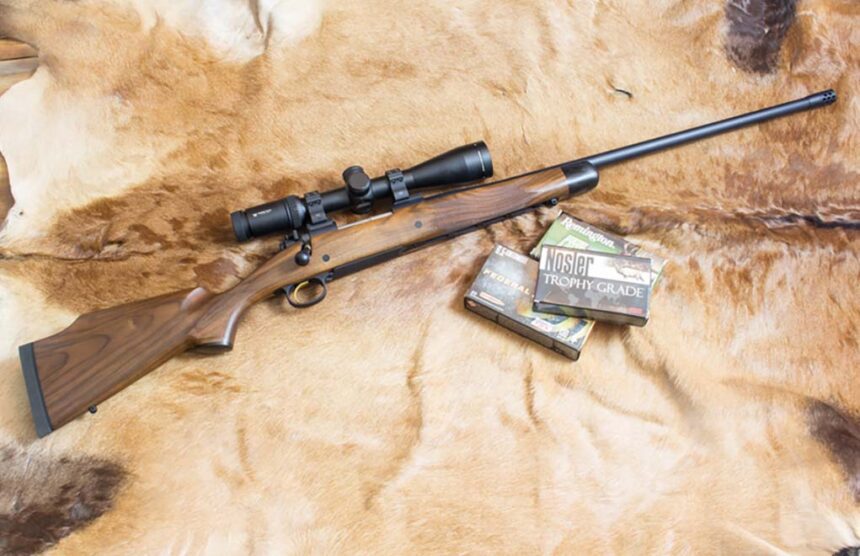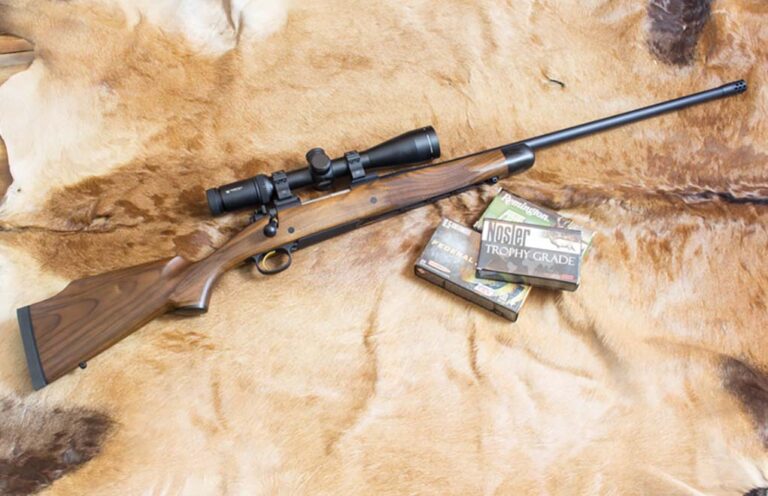
The Montana Rifle Company and its American-made Junction rifle are analyzed by the author.
One company stood out among the many rifle manufacturers of the 20th century, sneaking in at the end with a flagship rifle action named for the closing year of the 1900s.
The brainchild of gunsmith Brian Sipe, the Montana Rifle Company made an impact with their Model 1999 action, favored by hunters, and their bolt-action rifles that gained significant popularity. Utilizing a controlled-round-feed (CRF) action, heavily influenced by the proven original Winchester Model 70 CRF design, the Montana Rifles with the Model 1999 action catered perfectly to hunters on the back forty and those pursuing big game globally. The original rifle series offered various calibers ranging from .22-250 Remington to the sizable .505 Gibbs, pleasing many hunters during its time in the limelight.
Due to business challenges, production issues, and availability problems, the original Montana Rifle Company ceased operations and was eventually acquired by a private investor group before permanently closing in March 2020.
However, the old brand is making a comeback, as Grace Engineering of Memphis, Michigan, has resurrected the brand with two new bolt-action rifles: the synthetic-stocked Highline and the walnut-stocked Junction, which I had the opportunity to review.
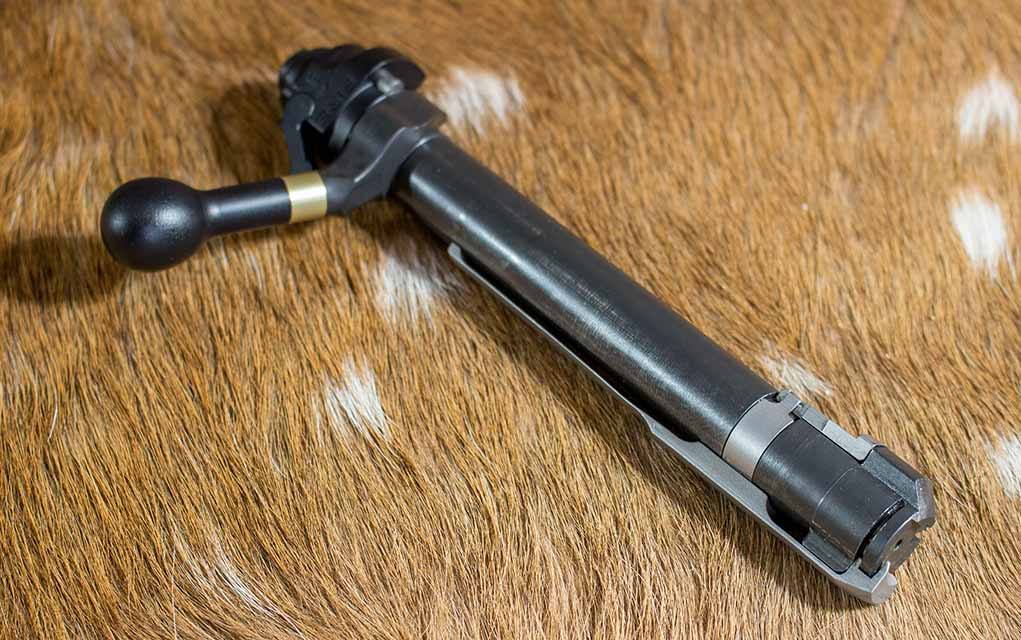
A Revived Brand
Upon unboxing, I expected the familiar Model 1999 action but was surprised by something wholly different. Montana revamped the action, introducing the Model 2022 action. Along with several noticeable features, it was evident that this was more than a mere revival of past designs. While the stock lines maintained their familiar thin wrist and heavy forend from previous Montana Rifles models, the Junction incorporated distinguishing features that set it apart.
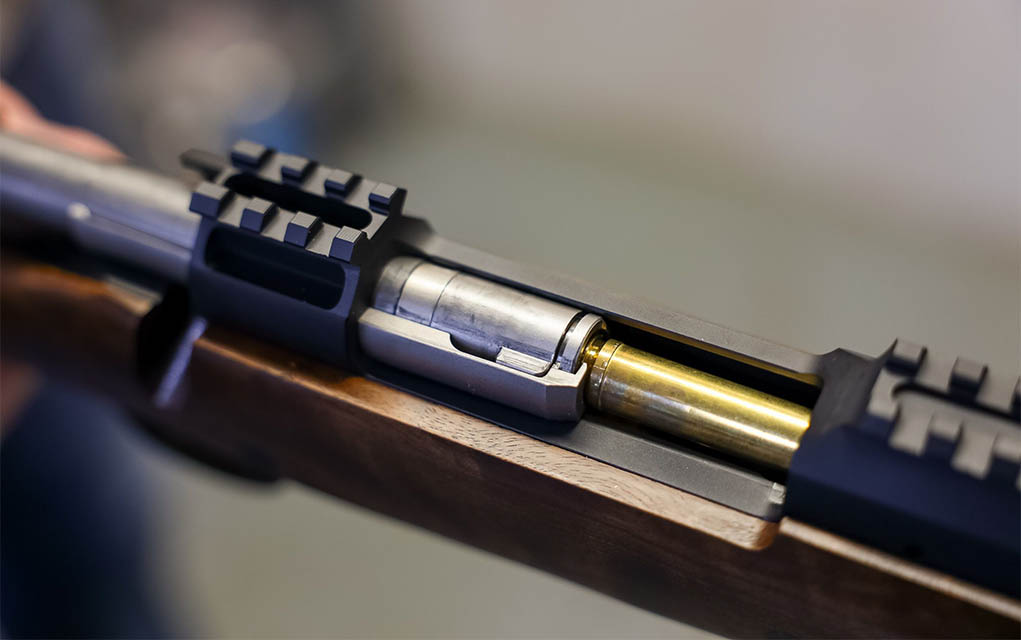
The most notable addition was what appeared to be a two-piece Picatinny rail on the receiver, which turned out to be machined into the receiver itself. Unlike the cast receiver of the Model 1999, Montana’s Model 2022 is milled from a solid billet of 416 stainless steel. The Mauser-style extractor band remains, coupled with the Winchester 70-style three-position safety and the hinged floorplate. While technically a CRF action, the Montana action accommodates single feeding of a cartridge without damaging the extractor, offering an additional round beyond the full magazine capacity.

The bolt handle features a distinctive gold band in the central section, culminating in a simple oblong bolt handle that feels comfortable in the hand. The Junction’s metalwork is coated in a weatherproof finish, making the action initially stiff out of the box but subsequently smoothing out with use.

The Junction is equipped with an adjustable trigger inspired by the Winchester Model 70 design, coated in the same gold finish as the bolt handle. Montana Rifles specifies the trigger’s weight at 3.5 pounds, but it can be adjusted down to 2 pounds. Testing revealed that the trigger consistently broke at 3 pounds, 5 ounces, with minimal creep and overtravel.
My test rifle—and the entire initial batch of Junction rifles—came in the popular 6.5 Creedmoor caliber, with a five-round magazine capacity. Montana plans to introduce 11 cartridges, including the 6.5 PRC, 7mm PRC, .308 Winchester, .300 Winchester Magnum, .375 H&H Magnum, and more throughout the year.
Featuring a 24-inch button-rifled, hand-lapped barrel made in Michigan at the Montana Rifles plant, with a 1:8 twist and threaded muzzle, the Junction includes a detachable muzzle brake that significantly reduces the already low recoil of the Creedmoor. The barrel lacks iron sights, and the receiver’s integral base indicates the rifle is designed for scope installation.
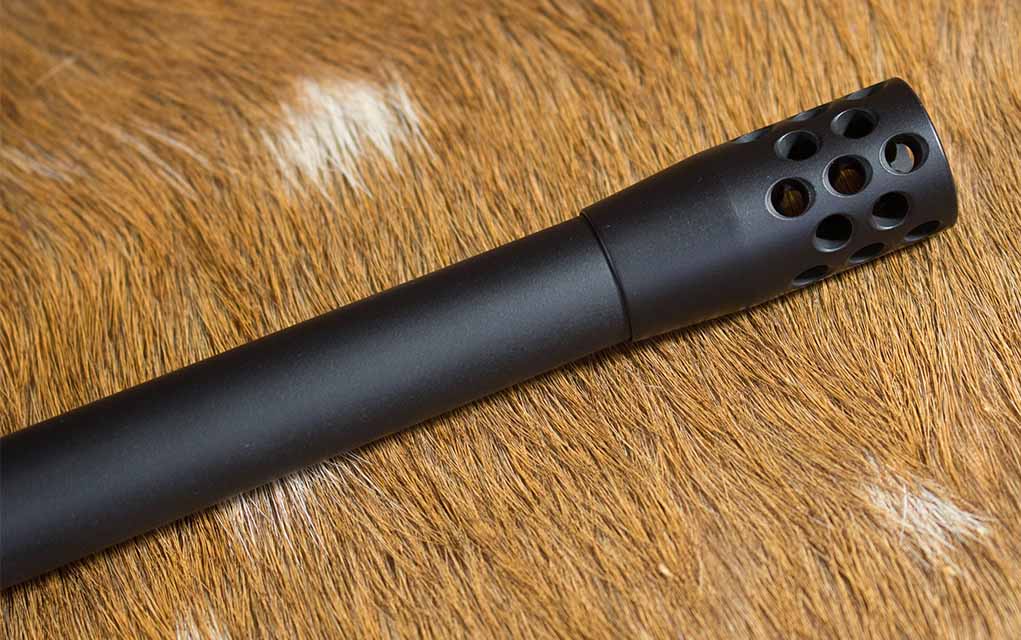
Examining the Junction’s stock, there’s a fresh appearance while retaining the familiar feel from older Montana Rifles models. The Junction boasts a walnut stock in the Monte Carlo style, with a prominent cheekpiece and checkering on the pistol grip and forend. The length-of-pull measured 13½ inches on the test rifle, aligning well with the standard dimension of most American hunting rifles, even though a slight extension may be preferred by some shooters.
Traditionally featuring a slender pistol grip and broader forend, the new Junction rifle from Grace Engineering incorporates both the conventional sling studs and a four-slot M-Lok rail along the stock’s bottom and between the forward sling stud and front action screw. Though visually unconventional, this innovation allows the attachment of bipods and tripods without requiring modifications by the user. Towards the rifle’s rear, Montana includes a pliable ⅝-inch recoil pad to absorb any remaining recoil not handled by the muzzle brake.
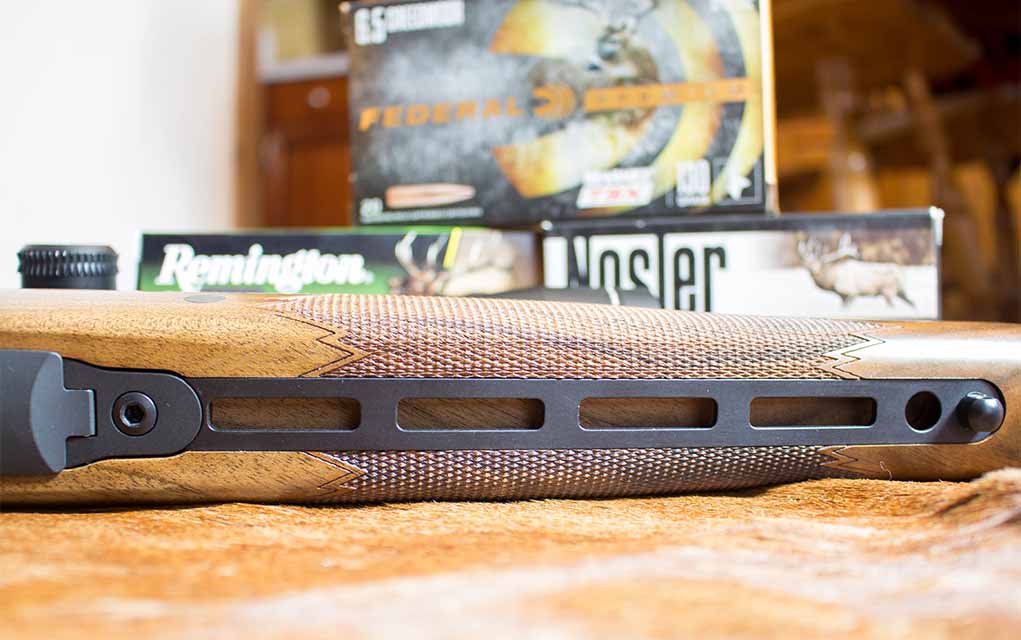
Overall, the Junction is a familiar-feeling rifle suitable for traditionalists that incorporates numerous practical features appealing to a younger audience accustomed to customization on firearms.
Field Testing The Montana Rifle Company Junction
My test rifle arrived equipped with an optic already mounted and aligned by Montana, though the Junction is not sold with an optic. The Vortex Viper 4-16x44mm in Vortex mounts, complete with torque specs on the rings, enhances the capabilities of the Creedmoor in terms of trajectory and accuracy. This setup was ample for assessing the accuracy of this combination at 100 yards.
Did I mention that Montana Rifle Company offers a ½-MOA guarantee with their new rifles? Well, they do. According
